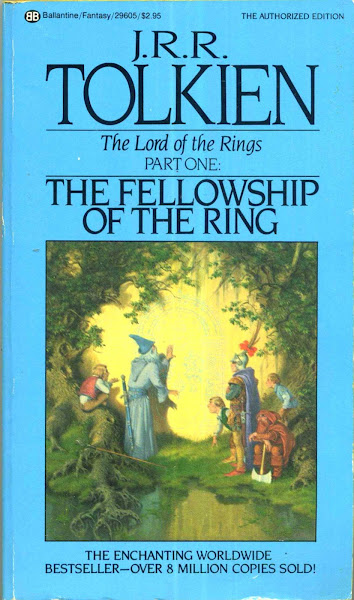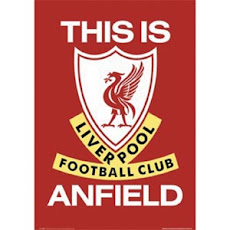The modern midfielder in the UFL
by rick olivares
The simple definition of a
midfielder is the field player who mans the middle of the field and serves as a
link to the defense and the offense.
The traditional #10, as
quoted by Gonzalez, plays the center and runs the offense. Ergo, creating plays
and finding teammates with throughballs, crosses, combination plays etc.
What’s with the #10?
Back when the game was
young, the alignment on the field was the players’ number. This was how many
football formations began; very pyramid-like. Obviously, they have since evolved.
GK (1)
DF (2) DF (3)
MF (4) MF (5) MF (6)
FW (7) FW (8) FW (9) FW (10) FW (11)
Some coaches make use of a
few of midfielders as attacking players while some use one of them in a holding
position to destroy opposing forwards before their reach their final third.
But that role has changed
over time. There are the modern midfielders who are box-to-box players meaning
they help out on defense with a tackle or a take-away here and there then run
up to join the attack and even finish it off. Examples are Liverpool’s Steven
Gerrard or Chelsea’s Frank Lampard.
Manchester United’s great
manager Alex Ferguson prefers his midfielders to play in an attacking role. In
all his years at Old Trafford, he’s never made use of a holding midfielder (at
least in the traditional sense as a stopper).
Former national striker and
Mr. Football Elmer Bedia believes the midfielder is the most important player
on the pitch for any team. “The midfielder is the most important position in the pitch because
he controls the game. They execute the game plan and help create the passes
that lead to goals.”
Loyola striker Freddy
Gonzalez concurs and says “If
you are talking about a #10 (in the traditional sense), he should be the player
pulling the strings for the team. But the modern #10 is pretty much a box-to-box
midfielder and is just as adept at scoring as he is creating opportunities for
his teammates.”
In my opinion, the
midfielder is possibly the most important player on the pitch (perhaps on the
same level as a terrific goalkeeper). The way I look at a midfielder is the way
I look at a point guard. Someone who creates, dictates the flow.
Someone like Cesc Fabregas
(when he was with Arsenal), Xavi or Iniesta of Barcelona, Mesut Ozil of Real
Madrid, Kaka when he was with AC Milan, or Juan Roman Riquelme formerly with Boca Juniors.
These players are creators.
Stallion head coach Ernie
Nierras has a unique take on this as he utilizes three central mids (their
Korean players) all who are not only interchangeable but can all put the ball
into play. Said Nierras, “The pass is can spell the difference between a goal
and a miss. A win and a loss. There should be quality in it.”
Looking at the UFL today,
the players who fit the mold of the traditional #10 include Pachanga-Diliman’s
Ousseynou Diop and Anto Gonzales. It’s a luxury for coach Bob Salvacion to have
two talented midfielders who make smart decisions and can pass the ball.
Gonzales sees the field better while Diop makes use of his speed and deft
dribbling to weave through defenders.
Global has probably the
most talented secondary in the league and they’ve had for the past several
years. At first, they had Boyet Cañedo then Angel Guirado then Marwin Angeles.
The constant there is Yu Hoshide. But when he’s off we see him come off for
Angeles.
Guirado was difficult to
guard because he off his feel for the game. He could make a variety of passes.
The presence of striker Izzo El Habbib also meant that one couldn’t simply
double team Guirado lest he lift the ball over to his cutting teammate.
In Global’s recent mauling
of Green Archers United, the defending league champions used their central
midfielder (Hoshide and at times attacking midfielder Ben Starosta) in the
fulcrum of their attack in their pass-run attack. In fact, in one stretch,
Global ran it on consecutive attacks with Green Archers unable to stop the
pass.
Kaya has Chris Greatwich who
seems to be in the form he was back in the 2010 Suzuki Cup. However, the lack
of attacking options for Kaya has clearly hurt the attack. Their offense has
essentially been distilled to
“let-OJ-Porteria-create-then-swoop-in-for-the-cross.”
Pasargad has the talented
Hamed Hajimehdi whose futsal skills are of huge help. Not many players can find
cutting teammates through the slightest of cracks in the defense and Hajimehdi
is one of few.
Army has the underrated
Boogie Margarse who crucial to their game. Don’t let his wiry frame fool you.
Teams have tried to steal the ball from him and force Army into playing the
longball. For his side, it’s no Margarse; no chance.
And there’s Loyola’s Mark
Hartmann who is clearly the best midfielder in local football now.
Let’s list down what he
does:
He’s a free kick specialist where he has scored a number of goals. He can
bend it like no other in this country. Perhaps the only comparable free kick
specialist is Pachanga-Diliman’s Boyet Cañedo.
He has the size to see over the defense and to win high balls. From his
vantage point in the middle (as opposed to a holding position) is he can slip a
variety of passes – diagonals, throughballs, flicks, combination passes, and
the longball when needed.
He is a smart player.
He runs in support and makes great passes.
And of late, his defense has greatly improved. He can track back and go
for the steal.
This is not to say that the
aforementioned do not track back on defense. But they are prized more for their
playmaking and leadership on the pitch. When Anto Gonzales was with Loyola the
past season, he told me that Hartmann’s technical skills were very good and
perhaps the best on the team.
Hartmann of course isn’t only solely the reason for
Loyola’s recent surge. The addition of Freddy Gonzalez is huge as it eases the
pressure on Phil Younghusband who has slipped behind and become an even more
complete player. Younghusband is just as crucial to the Sparks’ offense. Watching
Phil Younghusband and Mark Hartmann on the same line is like listening to a
symphony.
Matthew Hartmann is another revelation. He didn’t
look impressive in his initial run with Loyola but in all three matches for
Loyola thus far he has been superb. I believe his one-year away from the game,
he watched and learned a lot. The suspension has turned him into a better
footballer.
Their Korean players – Byeong Yeol Jeong, Park Minho,
and Jang Wo Jong (including his younger brother) have terrific football sense.
The Sparks have built a smart football team. And to think that James
Younghusband isn’t 100% owing to an injury.
But at the center of their offense is Mark Hartmann
who makes a lot of things happen.
I wonder why our clubs – Global, Loyola, Kaya, and
Stallion -- have great ball movement but that cannot be translated into the
national stage. The myth that terrific players cannot play together is just
that – a myth.
Even the Air Force teams of recent vintage (even if
they mostly preferred the wing play) can pass that ball just as beautifully as
the Brazilians define the game.
With better coaching and better players, we have seen
better ground games from the different teams. The current season is so unlike
the previous one where teams would oft resort to the longball.
The smaller Emperador Stadium pitch has also forced
teams to put the ball on the turf because the longballs find themselves going
out of bounds or immediately near the goalkeeper’s area of responsibility. And that
can mean well because to quote Nierras once more, it forces teams to play the
passing game. After all, if Barcelona has become many times champions because of
it (while having astute and skilled playmakers) then imitation is the sincerest
form of flattery.
And in the UFL, the football action just got a whole
lot better.
We have the players who can help us win glory on the
pitch. Let’s hope that others realize that.









Mark Hartmann plays very well when he's motivated. And boy, he's definitely motivated. He's playing with a chip on his shoulder. I guess the exclusion of Hartmann from the NT pool will only make him work harder. Maybe there are some underlying issues with the NT coach. In the past i think he thought he was entitled to a spot and didn't work that hard. He relied on talent. When the ball was taken away from him, he used to clamor a lot and won't get back on defense, much like JYH before. Cardio was also suspect. Now he's playing so much better and you can see the effort from him. Happy for the guy. He's definitely in form. Its about time he got rewarded with a call up.
ReplyDeleteThe problem about the national team is the cohesion , you get almost half of the squad the foreign leagues ( which is not bad because of "superior talents,maybe ) but seeing stallions , global and maybe loyola , why can't the national teams midfield play like this . midfield is the heart and soul of a team ,
ReplyDeletewhat's barcelona without xavi , iniesta and busquets ?? even in national team .
stallions has been playing with
with central midfielders
Bo Bae Park , Won Hyung Lee , Joo Young Lee (natural striker) , with jason de jong as holding midfield .
global has angeles , hoshide and the new guy Starosta
the prime example of how center midfielders influence the team is the case of green archers united , they got quality attackers and wing midfielders , but the central midfield role is not there .